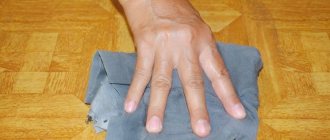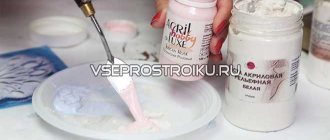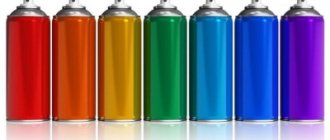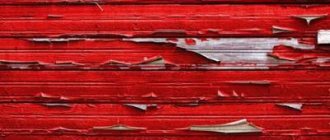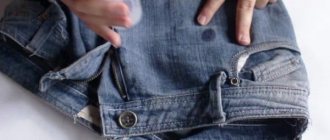Acrylic paint is a safe, non-toxic paint and varnish material made on the basis of pigment, a binding component, and water. After evaporation and complete drying of the water base, a frost-resistant, elastic, cracking and delamination-resistant protective coating is created. This type of paint is used for painting wooden, metal, and plastered surfaces.
It has special advantages compared to other paints and varnishes:
— environmental friendliness – complete safety for health and the environment due to the absence of toxic substances;
— the widest color palette;
— comfort of use, achieved by quick drying of the painted surface, ease of use, including washing;
— absence of an unpleasant odor, which allows you to dispense with a respirator mask when working;
- long service life - at least ten years;
— the acrylic layer does not allow water to pass through.
There are several types of acrylic paint depending on the following indicators:
— application options (external and internal work);
— resistance to environmental factors (moisture resistance, light resistance, resistance to mechanical factors);
— gloss and degree of whiteness;
- scope of application.
According to its structure, acrylic paint is a thick material that requires dilution before work to ensure convenient application and uniform distribution. The need for dilution arises after the material has been open for a long time.
There are several options for thinners.
Composition of acrylic paints
Paints consist of the following components:
- polyacrylates and acrylic resins, which form the basis of each layer and serve as film formers;
- surfactants, emulsifiers, stabilizers and fillers that increase the strength and wear resistance of the coating;
- organic and inorganic pigments that give color to the acrylic base;
- water, which is used as a solvent and liquid emulsion base.
Acrylic enamel, which is used for painting metal surfaces and car bodies, contains a large number of film formers. When dry, it forms a durable glossy coating that protects the metal from scratches and corrosion.
You can also get acquainted in more detail with the types of paints for cars, what acrylic paints are
Peculiarities
Acrylic paints include three elements:
- pigment that gives color tone
- binder (most often resin),
- water.
This composition ensures the environmental friendliness of the material. During work, the paint does not emit toxic fumes or odors. The presence of water makes the paint non-flammable. These qualities ensure the safety of using the material in office and residential premises.
If necessary, obtain the desired shade can be diluted with a coloring pigment. The presence of water allows the material to dry quickly. If it dries out, the material can be easily returned to its original state by diluting it with water.
Causes of drying out
The main reasons for acrylic paint drying out are:
- loose closure of the lid of a container with acrylic, violation of the integrity of the jar or tube;
- storage at high temperatures, under direct sunlight, etc.;
- using paint after the expiration date specified by the manufacturer;
- long-term painting, frequent opening of containers when working with the surface to be painted;
- evaporation of the solvent that was introduced to restore the paint under the influence of elevated temperatures.
The optimal consistency of the prepared paint is maintained only at a temperature of +15…+25°C. In cold weather, acrylic can become thicker, causing it to be applied in thick layers.
What else can you use?
Acrylic paint has unique properties, so it is not advisable to use universal solvents with it. Many online recommend replacing water with acetone or primer. But this approach does not always give a positive result, since the substances can lead to curdling of the paint. If you still want to use this product, then it is advisable to first mix a small amount of paint and apply it to a test surface. When the mixture dries, you should check the strength of the film. Sometimes this ratio can lead to the top layer being washable, and there is no point in using it outdoors or in the bathroom.
Alternative mixtures for diluting all water-based paints can only be alcohol and ether. But they can also affect the consistency of the paint differently.
If the product has thickened, you can try to dissolve it with vodka. It is important to do this gradually, since a large amount of alcohol will change all the parameters of the solution.
There are also universal and artistic thinners. The latter type of product is used by artists to design stained glass windows, decorative walls, and so on. But it should be understood that they all contain chemicals that are also present in specialized solutions for acrylic paints.
To learn how to make a solvent for acrylic paints with your own hands, see below.
Difference between thinner and solvent
Thinners and solvents differ in the specific impact on acrylic resins and the purpose of addition.
Thinners are used for:
- short-term reduction in viscosity to facilitate application by brush, roller or spray gun;
- regulation of layer thickness and drying speed of the coating;
- restoration of the initial density of the composition.
Thinners do not react chemically with film formers, but only make the polymer base more liquid and fluid. When applied to a surface, they evaporate at a given rate.
Solvents act more aggressively on acrylic. They weaken the chemical bonds in the polymer, bonding the resins and converting them into a homogeneous liquid state. Aggressive substances allow you to restore dried or heavily thickened paint, but if used incorrectly, they can greatly deteriorate the quality of the coating.
More about paint properties
- Brightness and color saturation.
- Acrylic paint dries quite quickly due to its water base.
- Dense and uniform surface coverage.
- Persistence. When applied, the water evaporates quickly, leaving behind a durable synthetic substance and pigment. They firmly bond the paint to the surface.
- Retains color when dried and exposed to sunlight.
- Strength of structure and resistance to external irritants.
- Water-repellent property. Acrylic paints are not affected by moisture after drying.
How to dilute acrylic paint
The classic thinner for acrylic is water. To get a high-quality product, you need to use a liquid with a minimum amount of impurities - bottled, settled or filtered. In cases where the paint has become very thick, use a mixture of water and alcohol.
Not all dyes allow dilution. Those into which liquid can be added must be marked accordingly. If the label is worn out or missing, you can dilute a portion of the material and test it on a small area of the surface to be painted.
The thinner should be poured in small portions, stirring thoroughly after each step. When using professional solutions, you can use a construction mixer: it will ensure uniformity of the composition, preventing the paint from hardening during mixing.
Features of diluting acrylic with water
The dilution proportion depends on the desired effect:
- 1:1 - has a good balance of viscosity and spreadability, forms a solid base for applying the final layer of a similar or thicker consistency.
- 1:2 (2 parts water) - suitable for creating a base coat, applied with a fluffy roller or sponge, leaving streaks when applied with a brush.
- 1:5 - used for tinting embossed surfaces, textured wallpaper and decorative elements; it is well absorbed and leaves a visible tint. A fivefold dilution of the dye is also used when priming porous coatings. The weakly saturated pigment penetrates deeply into the surface and replaces a special primer.
- 1:15 - applied with gradient coloring to create smooth, blurry transitions.
Compositions for painting and restoration are diluted in a minimal proportion (no more than 1:1). To obtain a rich color, water-dispersed dyes are mixed with water in a ratio of 9:1 (10% diluent).
Dilution with water and alcohol
If the paint has already thickened to the point of forming clots, then alcohol or vodka will be required for dilution. To soften lumps, you need to:
- prepare a small amount of alcohol, vodka or a 1:1 alcohol solution (when using compositions, you need to take into account the water content);
- pour into a jar with pigment, mix thoroughly;
- leave for a few minutes, stir again until the lumps disappear;
- if the composition needs to be applied immediately, then additionally filter it through gauze;
- Before sending a homogeneous emulsion for storage, pour a little solvent onto its surface and tightly close the lid of the container.
How to dilute with water
In its original form, acrylic paint has a thick consistency, so it needs to be diluted. For this, special solvents or products recommended by the manufacturer are used.
However, you can use a simple and affordable means for dilution - water. This component is initially included in the composition, so it does not disturb the texture and makes the consistency convenient for application.
It is important to understand that the proportion of water must be strictly observed so as not to spoil the original properties. In addition, for the intended purposes you will only need clean and cool water, without additional impurities.
In painting work, four types of dilution proportions are used:
Ratio 1:1. If you add water in equal quantities to the volume of paint, you will get a consistency suitable for applying a base coat. The liquid will be thick, but will not stick to the roller or brush and will lie evenly over the surface.
Ratio 1:2. If you add two parts of water to one part of paint, you get a composition of a mobile consistency, creating a thin layer on the surface to be painted. Used on smooth surfaces to reduce the intensity of dark colors.
Ratio 1:5. If the amount of water added 5 times the volume of paint, a liquid composition is obtained - tinted water, which will penetrate between the fibers of the working tool. When applied, a barely noticeable layer is formed, which will look interesting when painting textured surfaces.
Ratio 1:15. In this case, the result is ordinary water with a small amount of dissolved dye. This composition is used to create smooth transitions between shades and gradient color designs.
Measure the required amount of water with a syringe or measuring cup to maintain the recommended proportions.
Be careful: you need to dilute acrylic paint with small portions of water, adding gradually. In this case, you cannot stop stirring.
Types of solvents for acrylic paints
Alcohols, esters and hydrocarbons (petroleum distillation products) can be used as solvents for acrylic paints.
Solvents are classified into several types:
- Slow (heavy) - Body 741, Body 742. They are made from substances with a high boiling point, so the drying rate of the coating after their addition is reduced. Slow solvents prevent roughness and provide good flow, which is necessary for a glossy finish. If painting work is carried out at elevated temperatures (above +25°C) and low humidity, then the use of heavy additives for acrylic is mandatory. They are also used when painting a large surface of a car.
- Medium (universal) - P-12, Body 740. Solvents of this type are suitable for external and internal work under normal conditions (+15...+25°C, humidity 50-80%).
- Fast (light) - R-5, alcohols, solvents. Solvents with the highest evaporation rates are used at lower temperatures. They provide quick adhesion to the base layer, prevent the formation of streaks and dust settling on the drying coating. When working with a spray gun, the particles of the mixture with a fast solvent harden before contacting the surface, so the strength of the coating decreases. Light additives are used mainly when painting small parts.
solvents for acrylic paints
The most common in the construction and auto repair industry are complex solvents: R-4, R-5, R-12, etc. They include toluene, acetone, butyl acetate, xylene, ethylcellosol, solvent, cyclohexanone and alcohols.
They are used to control the flow of acrylic enamels, paints and varnishes. For example, P-5 is suitable for painting and most types of coatings, while P-12 is used primarily for painting cars.
In the artistic environment, acrylic thinners are more often used - Tamiya, Khimik, etc.
What to do with dried paint
Unlike enamels, acrylic paints can be used even after drying. When the composition sits for a long time after opening the lid, it inevitably dries out. This is typical not only for enamels, but also for other materials based on synthetic substances. However, acrylic paints can be thinned. True, their properties will differ from the previous ones.
Since the composition is made on the basis of water, its addition will return the characteristic features. First you need to thoroughly crush the dried piece and place it in a container that can withstand the temperature of boiling water. Then boiling water is poured into the vessel. The procedure is repeated as the liquid cools. When all the particles have absorbed enough liquid, the process is complete.
How to dilute acrylic paint if it has dried
If the paint has dried and hardened, it will become impossible to soak it with water. To restore the consistency of acrylic you need:
- Remove the dry agglomerate, grind and grind it into powder.
- Pour dispersed pigment with 1 part boiling water and stir thoroughly. After the water has cooled, pass the diluted emulsion through 2-3 layers of gauze.
- Repeat dilution with warm water until the desired consistency is obtained.
The hot method negatively affects the quality of the paint. If the original mixture is intended for painting, restoration or other artistic purposes, it should be restored with special solvents.
Boiling water can be replaced with medical or isopropyl alcohol. In this case, the solvent does not need to be heated, and the paint lumps do not need to be thoroughly crushed.
Isopropyl alcohol is included in professional acrylic thinners, so it is suitable for achieving the desired thickness of paint. Experienced modelers and artists recommend using a mixture of isopropyl alcohol and glycerin (the proportion is 25 ml per 1 liter of alcohol).
Glycerin slows down the evaporation of the solvent, which avoids roughness (shagreen) and improves the spreading of acrylic.
Restoration of thickened composition
How to dilute acrylic paint. If the mixture has dried out, this is the result of storing the product in improper conditions. Acrylic lacquers differ from other types of dyes in the ability to restore the desired consistency. The thickened substrate is well diluted and dissolved. To correct the situation, just add distilled water to the paint and mix it thoroughly with a construction mixer.
If there are clots and lumps in the mixture, then alcohol can be added.
Paint for the spray gun is prepared liquid.
How to prevent paint from drying out
To avoid acrylic drying out in a jar or tube, you need to tightly close the lid of the container. For construction work, dye is often purchased with a reserve in order to be able to restore the damaged coating with an exact match of the shade.
The mixture can be stored in a pantry, warm garage, basement and other rooms. Before closing, it is necessary to thoroughly wipe the lid and neck of the jar from the coloring composition.
From time to time it is necessary to check the expiration date of paint in closed cans and its consistency in open ones. If the acrylic has thickened, you need to immediately restore it with water before the polymer base becomes dry.
When painting large surfaces, dilute the paint in portions and cover the jar tightly with a lid. To paint the car evenly, you need to slightly dilute the dye before applying the second coat. Due to the active evaporation of solvents, acrylic enamel has time to thicken while the master applies the first layer of coating.
The quality of restored dry paint is significantly reduced, so it is advisable to revive the polymer emulsion before it dries completely. To make working with the composition easier, you can use both thinners and solvents. The former allow you to adjust the consistency, while the latter bind the acrylic and speed up the curing of the finished coating.
Preparing for work
If you decide to use acrylic dyes to achieve your goals, then you need to start preparing. Their beauty lies in their wide range of applications. You can create works of art by painting pictures, use them in repairs and decoration, and such paints can even be used for furniture restoration.
But using acrylic paint in its pure form will not bring the desired effect. Due to the thickness of the dye, the painted surface will reflect the relief pattern of the instrument with which the composition is applied. Therefore, diluted solutions are used.
Dyes are produced for various purposes: for external or internal work, for creating paintings by numbers. Therefore, when answering the question of how to dilute acrylic paint for walls, it is important to study the instructions. The thinner can be either water or acrylic solvent.
Before diluting acrylic paint with water, you need to make sure that there are no impurities in it, and the temperature is no more than 18-20o. You will need to prepare small containers for test dilution. The main thing is that you can use them to determine the amount of ingredients used.
Experienced craftsmen identify several basic proportions for diluted paint; you can mix it in different ways after experimenting:
- When choosing a ratio of one part water to one part purchased paint, there is no longer the appearance of clots on the painting tool. The surface color is smooth and uniform, but the composition consumption is quite high.
- If the amount of water is doubled, the paint dissolves and becomes quite liquid. Completely saturates the instrument. This composition is easy to apply to a brush, ideal for smooth surfaces.
- When adding one part base to five parts water, the substance becomes too liquid. It is used to paint those elements whose texture needs to be emphasized, or parts with complex geometry are selected for painting.
- When diluted to a ratio of one to fifteen, colored water is obtained. It is used to create gradient transitions.
Some manufacturers recommend using only special solvents for acrylic as a thinner. Otherwise, the paint will become like rubber. Therefore, when choosing how to dilute acrylic paint, you should carefully read the instructions.
Whatever you choose, the method for diluting acrylic is the same:
- Prepare containers of sufficient volume and measuring rulers.
- Pour the required amount of base paint into it, check the level with a ruler, and mix.
- Prepare the required volume of liquid for dilution, and check its quantity.
- Slowly add acrylic paint thinner to the base mixture, stirring continuously to obtain a homogeneous mixture.
- If you need acrylic enamel with strictly defined parameters, for example, for painting a car part, use a viscometer to determine the viscosity.
- If necessary, filter the solution.
Despite the fact that the composition is mainly water-based, once acrylic paint has dried, it is very difficult to remove. The tool used must be immediately washed in soapy water or a solvent for acrylic paints must be used. Otherwise, it will not be possible to soak the instruments; they will become unusable.
In what cases is it necessary to thin the paint?
During long-term storage, the material can thicken even in a tightly closed container, and even more so if it was stored open. This paint cannot be applied with a roller or brush.
If the paint is applied unevenly, rolls off, forms sagging and brush marks, then it must be diluted.
If work is performed on large surfaces, the paint can be diluted, thereby increasing its volume. When thinning the paint, it is important to monitor its viscosity and not allow the consistency to become too runny.
Rules for diluting paint with water
As a rule, problems await beginners who decide to do all the painting work themselves. After all, the process itself is not difficult. And difficulties arise only when bringing it to the desired consistency.
Let's look at how to dilute water-based paint:
- You should carefully read the manufacturer's recommendations on the packaging.
- Regardless of the instructions, do not add water to the paint in an amount exceeding 10% of the total volume of the palette.
- Use different proportions of water for each layer of paint.
The last point needs to be discussed in more detail. If you plan to apply at least three layers of paint for a better coating, then the first portion should be diluted thinner. This promotes better penetration into the pores and acts as a primer if it has not already been done. Therefore, when diluting for the first time, you need to add the largest amount of water that the instructions allow. Up to all 10%.
Applying the first layer of paint Source legkovmeste.ru
The second layer will require only 2-3% liquid. As for the topcoat, this portion does not need to be diluted at all. The latter also applies to the second layer, if the initial consistency of the palette is ideal. Excess water will only lead to loss of quality.
And it is not uncommon for a situation when, after diluting the paint, it is necessary to increase the number of layers in order to achieve the desired visual effect. And only unscrupulous hired contractors are guilty of excessive dilution, when the owners trust them with the purchase of materials. This makes it possible to increase the budget.
Adviсe
If you choose the right solvent for the paint and varnish material, then after painting cracks will not appear, the layer will not swell, or the product will not curl. To remove paint residues, it is also important to choose a suitable composition, taking into account the characteristics of the base so as not to spoil it. To easily remove a dried layer, you need to make the right efforts, trying to rub the substance deeper so that it can saturate the layer and it will come off completely.
Most compounds are hazardous to humans, so working with them must follow safety rules. General rules include the following:
- The master puts on protective gloves, goggles, and a respirator;
- If the work takes place inside, and not on the road part, on the street, then high-quality ventilation of the room is created;
- If drops get on the mucous membranes, rinse with water immediately and consult a doctor for help.
If you choose the right solvent for the paint and varnish material, then after painting cracks will not appear, the layer will not swell, or the product will not curl.
The article described how to properly dilute paint so as not to lose its technical characteristics and not have to buy a new can. The choice of product is important; they focus on the constituent components of the coloring material. If it is necessary to remove a layer, do not forget about the type of base so as not to cause damage to it.
Useful" recommendations
Acrylic solutions are quite demanding to use. Therefore, when working with them, you should consider a few simple rules:
- Do not dilute the color throughout the entire volume of the solution. Use only the amount needed for painting. If you leave the mixture painted, it will dry out quickly and be difficult to restore.
- It is advisable to store acrylic mixtures in a cool place, but at temperatures above +5 degrees. A warm room promotes rapid evaporation of the solvent and thickening of the liquid.
- Water for dilution should only be used cold and clean. Many experts recommend bringing the liquid temperature to room temperature. Do not use water that contains large amounts of chemical or mechanical impurities.
- To apply the solution evenly, use spray guns. They allow you to control not only the thickness of the layer, but also the quality of the surface being coated.
- Before diluting products, be sure to read the instructions, which indicate what types of liquids can be used to dissolve specific products.
Thinning acrylic paint is a relatively simple process that requires only the correct choice of solvent and precise proportions.
This article was produced by our experienced team of editors and researchers, who reviewed it for accuracy and comprehensiveness.
Number of sources used in this article: 9. You will find a list of them at the bottom of the page.
wikiHow's content management team carefully monitors the work of its editors to ensure that every article meets our high quality standards.
Traditional paint thinners are too harsh, but do you need something less caustic? If so, then make a mixture of flaxseed and lemon and use it to thin the paint. If you want to thin the paint, but do not have the usual solvents at hand, use acetone or white spirit for this. These products will do the job perfectly, provided that you work in a well-ventilated area and maintain proper proportions. If you are dealing with acrylic or latex paint, they can be diluted with water.
>

